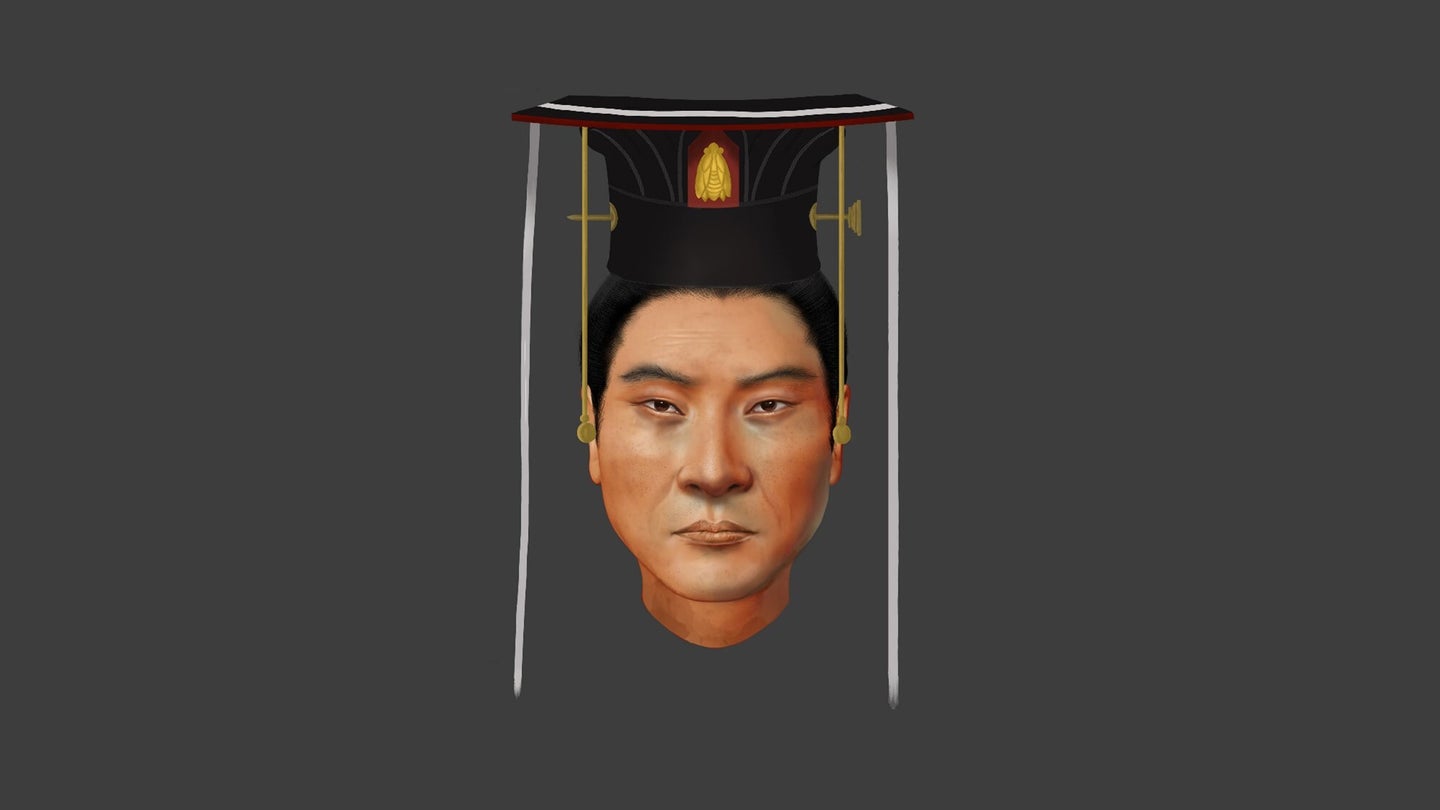Scientists recreate the face of an ancient Chinese emperor
Emperor Wu of the Northern Zhou reigned from 560 to 578 CE and died at age 36.

A team in China used ancient DNA to reconstruct the face of an emperor who reigned 1,500 years ago. Emperor Wu was the ruler of the Northern Zhou dynasty from 560 to 578 CE. The facial reconstruction is detailed in a study published March 28 in the journal Current Biology. The study sheds light on Emperor Wu’s potential cause of death and the migration pattern of a nomadic empire that once ruled parts of northeastern Asia.
As a ruler, Emperor Wu is known for building a strong military and unifying a northern part of China after defeating the Northern Qi dynasty. Emperor Wu’s tomb was discovered in northwestern China in 1996. Archaeologists found several bones, including a nearly complete skull.
Since then, ancient DNA research techniques have advanced and the team from this new study was able to recover over 1 million single-nucleotide polymorphisms (SNPs) on his DNA. Each SNP–or snip–represents a difference in a single building block of DNA. SNPs occur normally throughout DNA and each human genome has about four to five million of them. To be classified as an SNP, the variant must be found in at least one percent of the population. There are more than 600 million SNPs in populations from all over the world.
[Related: This 7th-century teen was buried with serious bling—and we now know what she may have looked like.]
The team found SNPs that contained information about Emperor Wu’s hair and skin color. Historians believe he was ethnically Xianbei–an ancient nomadic group primarily found in present day Mongolia and northern and northeastern China.
“Some scholars said the Xianbei had ‘exotic’ looks, such as thick beard, high nose bridge, and yellow hair,” study co-author and Fudan University bioarchaeologist Shaoqing Wen said in a statement. “Our analysis shows Emperor Wu had typical East or Northeast Asian facial characteristics,” he adds.
With the SNP data and Emperor Wu’s skull, the team reconstructed his face as a 3D rendering using open-source Blender software. The program is based on the soft tissue depth average of modern Chinese persons. They also used the HIrisPlex-S system, which “predicts externally visible human traits using 41 SNPs.”
The genetic data revealed that he has brown eyes, black hair, and “dark to intermediate skin.” His facial features were also similar to those from parts of Northern and Eastern Asia today.
“Our work brought historical figures to life,” study co-author and Fudan University paleoanthropologist Pianpian Wei said in a statement. “Previously, people had to rely on historical records or murals to picture what ancient people looked like. We are able to reveal the appearance of the Xianbei people directly.”
Emperor Wu died in 578 at the age of 36. Some archaeologists believe that he died of an illness, while others say the emperor was poisoned by his rivals. Analysis of his DNA using a genetic database called Promethease, reveals that he was at an increased risk for stroke, which could have contributed to his death. According to the team, finding aligns with historical records that describe Emperor Wu as having potential symptoms of a stroke–aphasia, drooping eyelids, and an abnormal gait.
[Related: Ceramic pipes kept this town from flooding during monsoons 4,000 years ago.]
The genetic analysis also shows that the Xianbei people procreated with ethnically Han Chinese individuals when they migrated into northern China.
“This is an important piece of information for understanding how ancient people spread in Eurasia and how they integrated with local people,” said Wen.
In future studies, the team plans to study the DNA from people who lived in ancient Chang’an city in northwestern China. Chang’an was the capital city of many Chinese empires for thousands of years and was the eastern over thousands of years. It was also located on the eastern end of the famed Silk Road–a critical Eurasian trade network from the second century BCE until the 15th Century. The team hopes that the DNA analysis will reveal more data on how migration and cultural exchange unfolded in ancient China.
